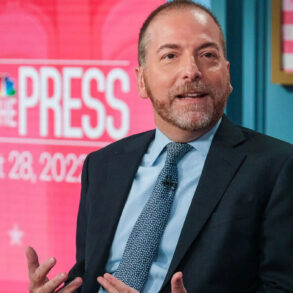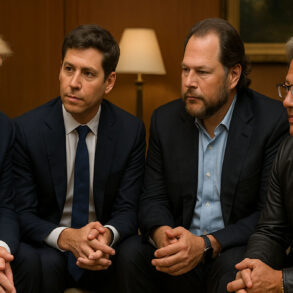WSJ: Countries line up with promises to fix trade deficits as U.S. tariff deadline looms
In the weeks since President Donald Trump announced sweeping new reciprocal tariffs on foreign imports, a dramatic shift has begun to take place among America’s trading partners. Many countries are now moving quickly to buy more American products in hopes of avoiding tariffs that could otherwise cause serious damage to their economies. As reported by The Wall Street Journal’s Timothy W. Martin and colleagues, countries are not only pledging to increase their purchases of U.S. goods but are also signaling willingness to change trade behavior more broadly.
The Trump Tariff Strategy
On April 2, President Trump revealed his plan to impose sharp new tariffs on countries that have large trade surpluses with the United States. While the tariffs have been temporarily paused until July, Washington has begun negotiations with more than 70 nations. Trump’s message has been clear. In his words, the United States is “a market that has something everyone wants.”
During a recent White House meeting with Italian Prime Minister Giorgia Meloni, Trump declared, “There will be a trade deal, 100 percent.” He also signaled optimism about a possible agreement with the European Union if it agrees to buy more U.S. energy and agricultural products.
Treasury Secretary Scott Bessent and Vice President JD Vance are leading the push. Bessent is prioritizing countries like the United Kingdom, Australia, South Korea, India, and Japan. Vance told reporters that there is a “good chance” of a breakthrough with the United Kingdom.
Countries Rush to Make Deals
The urgency is real. Vietnam, which has a trade surplus of over $120 billion with the U.S., has already made several major gestures. The country finalized a $300 million deal for new Boeing jets, approved Elon Musk’s Starlink internet service, and fast-tracked a $1.5 billion Trump resort.
In Thailand, the government is purchasing U.S. corn feed. South Korea, which previously showed little interest, is now preparing to send officials to Alaska to discuss a $44 billion liquefied natural gas project. Trump has described the deal as “truly spectacular.”
India has pledged to nearly quadruple its trade volume with the U.S. to $500 billion. Foreign Minister S. Jaishankar explained that the country is approaching this round of talks with “a very high degree of urgency.”
Even the European Union is hinting at concessions. EU leaders have expressed interest in importing more U.S. soybeans and liquefied natural gas. An EU spokesperson confirmed that the United States is “absolutely one of the options” for diversifying energy supplies away from Russia. Trump has floated the idea of ending the tariff standoff if the EU agrees to purchase $350 billion in American energy products.
Some Nations Face Tougher Choices
Not all nations are financially able to respond with large purchases. Some lower-income countries, like Zimbabwe, are pledging to remove their own import restrictions on U.S. goods instead of launching countermeasures. Zimbabwe’s president announced a plan to suspend tariffs immediately to promote what he called a “mutually beneficial and positive relationship” with Washington.
Other countries, like Israel, are taking a more direct approach. Prime Minister Benjamin Netanyahu said during his recent U.S. visit that Israel would eliminate its $7.4 billion trade surplus with the U.S. He told Trump, “This is not difficult for us. We will do it.”
The Root of the Problem: Non-Tariff Barriers
While many countries are stepping up purchases of American goods, Trump’s administration is aiming for more than short-term spending boosts. Wendy Cutler, a former U.S. trade official now at the Asia Society Policy Institute, explained that splashy deals can help in the short term but are no substitute for long-term reforms.
“It’s easier to implement a ‘buy more’ strategy than negotiating structural measures typically found in trade agreements,” Cutler said.
Trump’s team is pushing not only for higher sales but also for the removal of what it considers unfair non-tariff barriers, particularly in Europe. These include food safety rules, agricultural quotas, and data restrictions that make it harder for U.S. companies to compete in foreign markets.
Europe’s Reluctance to Open Its Pantry
One of the most difficult obstacles to resolving trade imbalances lies in the European Union’s food policies. While Trump has repeatedly complained about the EU’s refusal to buy American farm goods, experts say the problem is not about tariffs but about taste, regulation, and politics.
Speaking at a campaign stop in Florida, Trump said, “They don’t take our farm products, they take almost nothing and we take everything from them.”
According to a report by Politico, European food regulators reject many U.S. staples on safety grounds. For example, the EU bans hormone-treated beef and chlorine-washed chicken. Genetically modified corn and soy also face strict labeling and approval requirements.
John Clarke, a former EU agriculture negotiator, explained the deeper cultural divide. “The EU exports mostly high-value products: wine, spirits, charcuterie, olive oil, cheese,” he said. “The U.S. exports low-value commodities: soya, maize, almonds.”
Clarke added that European consumers are not just making economic decisions. “Americans happily gobble and slurp European goods,” he said. “But Europeans typically find U.S. foods too fatty, salty, sugary or alcoholic.”
Even when the EU agreed to buy more U.S. soybeans during Trump’s first term, it was due to a bad harvest in Brazil and Argentina, not a change in policy. Today, with Brazil producing record crops and Ukraine expanding oilseed farming, the EU is rolling out a new strategy to grow more protein domestically.
Political Risk in European Markets
Europe’s resistance to U.S. agriculture is not only about regulation and health concerns. There is also a political cost. Farmer protests erupted across the EU last year, partly in response to foreign competition. The European Commission is now planning stricter rules on imported food to protect local farmers.
Poland, Hungary, and Slovakia have maintained bans on Ukrainian grain, and similar restrictions could apply to U.S. imports. With elections approaching in France, Italy, and Spain, European leaders are under pressure not to anger rural voters.
According to a leaked EU policy draft, Brussels is considering “mirror clauses” that would force imported products to meet the same pesticide and animal welfare standards as EU-grown goods.
A Consumer Backlash in Denmark and Beyond
The backlash is not limited to government officials. In Denmark, a grassroots movement has taken shape to boycott American products. Tens of thousands of citizens have joined a Facebook group to share tips on how to avoid U.S.-made goods.
One member, retired psychologist Mette Vennegaard, said she removed all American products from her pantry after learning that her favorite marzipan contained California almonds. “If they are American, they do not go in the shopping basket,” she told CBC News.
Denmark’s largest supermarket chain now labels all European-made goods with a black star so that shoppers can make informed choices.
The campaign reflects growing resentment over Trump’s efforts to claim Greenland, which is part of the Kingdom of Denmark. President Trump told reporters, “We need Greenland, and the world needs us to have Greenland.”
Meanwhile, Bo Albertus, a school principal near Copenhagen, canceled his subscriptions to Netflix and Apple TV, swapped out California wine for Italian bottles, and joined the boycott movement. “We are 92,000 individuals who are choosing for ourselves what to do with our money,” he said.
A Global Rebalancing or a Global Rift?
While Trump’s push has led to real offers and changed behavior from some trading partners, others are resisting or retaliating in subtler ways. Countries like Vietnam, India, and Israel are quickly buying more U.S. goods, while others like Denmark, France, and Canada are seeing political leaders and consumers push back.
The long-term impact of these trade battles is still uncertain. But one thing is clear: the Trump administration has forced a global reconsideration of the rules of trade, and many countries are now recalculating their economic strategies to either align with or push back against the growing demand to buy American.








